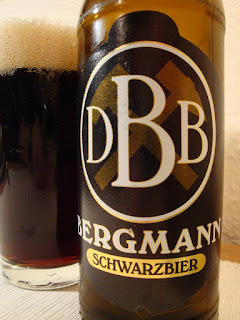My wife left me yesterday and brought our son with her.
She'll be back though. In about a week after she finishes visiting her parents. So what do I do when I'm left home alone? Brew!
I had been planning to make a pumpkin ale, as I'd never made anything like it before, and I wanted to make something that was well outside
Rhineheitsgebot territory, while possibly being innocent in appearance, unlike those sinful Belgian fruit beers. Unfortunately I'm still in the process of building a mash tun which I reckon I'd need to use to do a proper job on a pumpkin (after roasting it), so I said screw it and modified the recipe to use malt extract and a bunch of other stuff, but keep the spices I planned on using for the pumpkin ale.

For those who care, the recipe, which I named
Gremmendorfer XXXmas Ale, is as follows, for 22 litres:
- 3.3 kg Dry Light Extract
- 330 g Dry Wheat
- 550 g CaraCrystal
- 330 g Special B
- 110 g Chocolate Malt
- 37 g Challenger (6.5%) - added during boil, boiled 60 min
- 32 g Ginger (fresh) - added during boil, boiled 15 min
- 15 g Bitter Curacao/Bitter Orange (Peel) - added during boil, boiled 15 min
- 1 Cinnamon stick, crushed - added during boil, boiled 15 min
- 5 Allspice berries crushed - added during boil, boiled 15 min
- 5 Cloves crushed - added during boil, boiled 15 min
- 1.5 tsp Grated Nutmeg - added during boil, boiled 15 min
- 250 g Honey - added during boil, boiled 15 min
- 30 g Styrian Goldings (3.6%) - added during boil, boiled 15 mins
- 26 g Styrian Goldings (3.6%) - added during boil, boiled 2 min
- Fermentis SafBrew T-58
I ended up with 20 litres in the fermenter, as planned (leaving crap behind in the boiler), with a gravity of 1.072. The ginger is defiitely prominent, and it smelled and tasted pretty nice. I'm going to split this into a few secondary fermenters in a few days, one as is, one with a "light toast" oak chips and another with "heavy toast" oak chips. One way to learn what they do!
So I'm wondering how my colleagues will take to it. I'll keep it stashed still Christmas anyway, and release it as a kind of Gluhbeer (not as strong though!).

As a reward I opened a bottle of
Lowen Bräu (of Buttenheim)
Ungespundetes Lagerbier and had it with some
bauernbrot I made the night before, old gouda, ham and hot hot mustard. I often drink while brewing, but if I'm alone I'll wait till the work is done, as there's nobody around to call an ambulance if I drop 25 litres of boiling liquid on myself while under the influence. The Ungespundetes Lagerbier is a clear amber, leaning towards the orange part of the amber spectrum. It has a clean aroma, almost classic "nobel" hops with a citric twist and slight herbal note. The citric notes come out again in the taste on top of a gentle caramel base. It's a little thin, but simple and refreshing, and just what I needed.

After that I popped open a bottle of
Bolten's Ur-Alt, I'll return to that another time, as I just gobbled it without thinking too much about it. Following that though was my own
Munster Mulligan Porter, a brew I made in the middle of July. My how time flies! The Mulligan moniker has been attached to pretty much every porter myself and a friend have made on account of the first one we made being based on left over ingredients, probably far too many, in true
Mulligan Stew tradition. This was the first porter I made solo since moving to Germay. I used loads of Special B in it, so it has a distinct raiseny/plum flavour profile backed by wadges of chocolate malt, and a very slight roasty bitterness from a touch of black malt. Gently carbonated, it's a shockingly easy drinker and leaves a plum like sweetness after it.
 I got this pair in my second Franken box. I kinda liked the old geezer on the label, and it's nothing to do with the fact he looks like he's dressed up for a St. Patrick's Day parade. Probably more to do with the huge glass he's holding!
I got this pair in my second Franken box. I kinda liked the old geezer on the label, and it's nothing to do with the fact he looks like he's dressed up for a St. Patrick's Day parade. Probably more to do with the huge glass he's holding! I had better hopes for the Gampertbräu Förster Dunkel which was, well, dunkel! A slightly hazy red-tinged brown to be a little more exact. Initially it seemed a little over-sweet, but it also has a slightly vinous, tannic quality sitting in a medium body. This is a pleasent flavour, but is slightly spoilt by a saccharine-like finish. In fact, the finish is almost bock-like, in a thin diluted way.
I had better hopes for the Gampertbräu Förster Dunkel which was, well, dunkel! A slightly hazy red-tinged brown to be a little more exact. Initially it seemed a little over-sweet, but it also has a slightly vinous, tannic quality sitting in a medium body. This is a pleasent flavour, but is slightly spoilt by a saccharine-like finish. In fact, the finish is almost bock-like, in a thin diluted way.
























